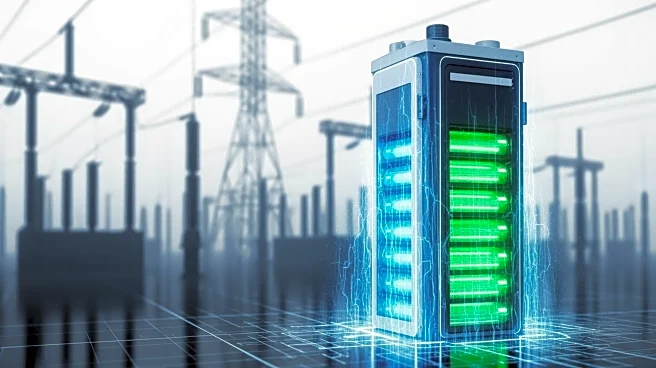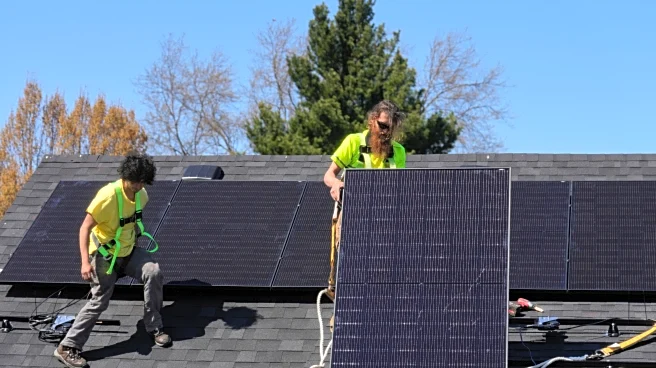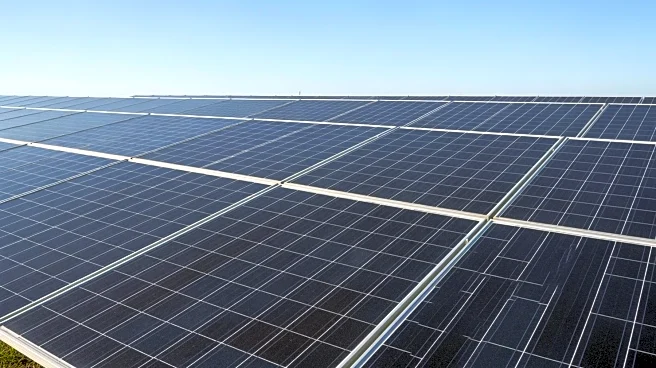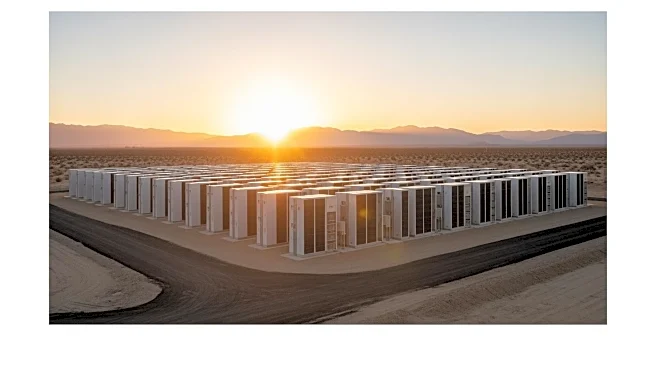What's Happening?
California has successfully avoided issuing Flex Alerts for energy conservation during the summer months since 2022, thanks to significant investments in battery energy storage. The California Independent System Operator (CAISO) has overseen a substantial
increase in battery storage capacity, growing from 500 megawatts in 2020 to over 15,700 megawatts. This expansion has allowed the state to store solar energy and release it during peak demand periods, reducing reliance on gas-fired power plants. The shift towards battery storage has been transformative, enabling the grid to operate with reduced fossil fuel usage and enhancing reliability during extreme weather events. Despite challenges such as the limited capacity of lithium-ion batteries, California continues to advance its climate goals, aiming for 100% carbon neutrality by 2045.
Why It's Important?
The development of battery storage in California is crucial for achieving the state's climate objectives and ensuring energy reliability. By reducing dependence on fossil fuels, California is making strides towards its mandate of carbon neutrality by 2045. The growth in battery storage not only stabilizes the grid during peak demand but also positions California as a leader in renewable energy adoption. This shift has broader implications for the U.S. energy landscape, as other states may follow suit in enhancing their grid reliability through similar investments. The economic benefits include potential cost savings from reduced fossil fuel usage and the creation of domestic manufacturing opportunities for battery components.
What's Next?
California is expected to continue expanding its battery storage capacity and exploring longer-duration battery technologies to further reduce reliance on natural gas. The state is also addressing challenges such as permitting hurdles and safety concerns associated with large-scale battery installations. As California progresses towards eliminating coal power by November, the focus will remain on diversifying energy technologies and enhancing grid resilience. The state's efforts may influence national energy policies, encouraging other states to invest in renewable energy and battery storage solutions.
Beyond the Headlines
The shift towards battery storage in California highlights the ethical and environmental considerations of transitioning from fossil fuels to cleaner energy sources. While battery storage presents safety challenges, such as fire risks, it offers a more sustainable alternative to traditional energy generation methods. The state's commitment to renewable energy reflects a broader cultural shift towards environmental responsibility and innovation in energy technology. As battery storage becomes more cost-effective, it may drive long-term changes in energy policy and industry practices across the U.S.














